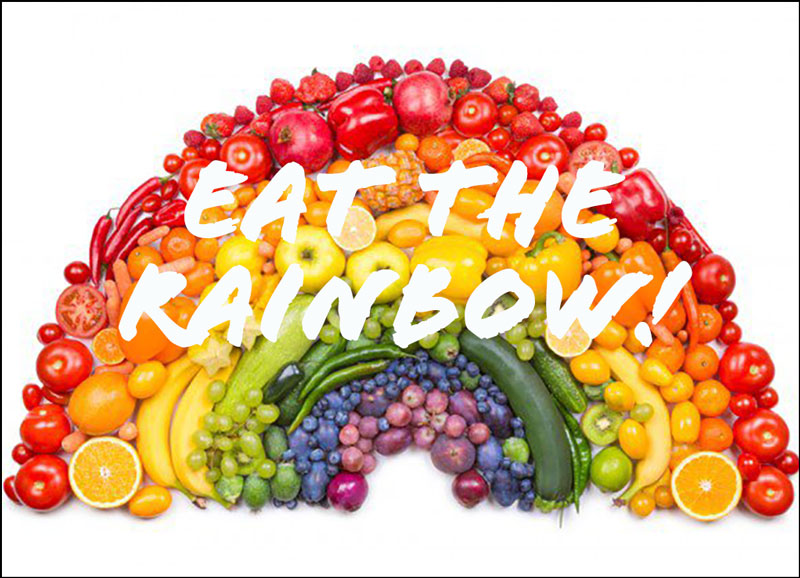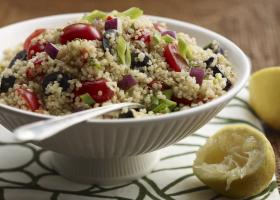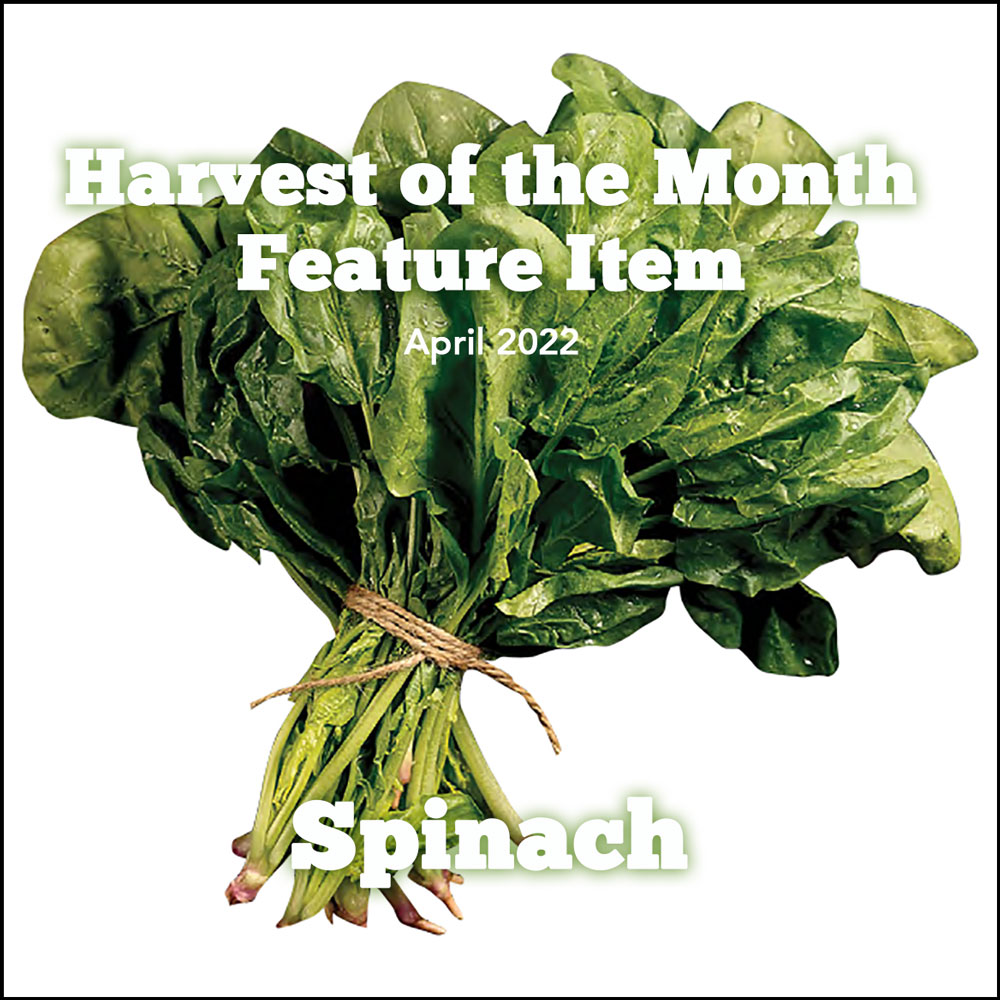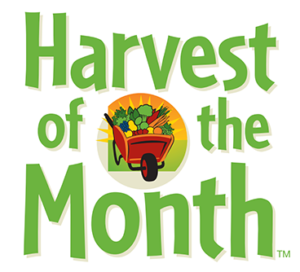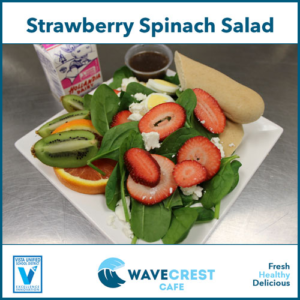
April 2022 Newsletter
April 07th, 2022
Eat The Rainbow!
Candy companies might want you to merely, “taste the rainbow,” but we encourage you to eat it up and make your plate colorful year-round. There are so many delicious varieties of produce to add to meals to make them colorful, which also adds an array of vitamins and minerals to the meal.
And there are foods (real, natural foods) in practically every color: Tomatoes, Orange Bell Peppers, Yellow Squash, Broccoli, Blueberries, Beets, Cabbage, Kiwi, Carrots, and so many more. Take a few minutes with your family and see how many colorful fruits and vegetables you can come up with.
We’d like to share some colorful recipes that are quick, easy, and healthy. Try some of these dishes and see how you can add more color to your plate.
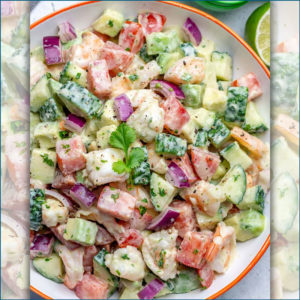 Try this recipe for a Shrimp and Avocado Salad that’s perfect for the warmer weather coming. It combines many seasonal, local items into a fresh and tasty entree or side salad.
Try this recipe for a Shrimp and Avocado Salad that’s perfect for the warmer weather coming. It combines many seasonal, local items into a fresh and tasty entree or side salad.
What’s better is that everyone in the family can contribute to preparing this meal. From measuring ingredients to chopping and dicing to cooking in a skillet, there are easy and fun activities for all. Make this dish just once and we’re pretty sure you’ll be coming back for more all summer.
And then there’s this Mediterranean Quinoa Salad.
Quinoa is a great rice alternative with lots of protein and a perfect base for many meals. It’s also gluten-free, for those who need a gluten-free option for their health. This salad has fresh fruits and vegetables, some chicken broth, lemon juice, and vinegar for added flavor.
Take some time to look for other ways to use colorful and delicious foods in recipes you’re making at home. Send us your recipes so we can share them as well!
———————————
The featured food for Harvest of the Month in April is the dynamic and flexible leafy green known as Spinach. Classes participating in this program are in for a tasty treat and some fun learning.
About Spinach
Spinach is an excellent source of vitamins A, C, and K, as well as folate, magnesium, calcium, iron, potassium, and riboflavin. Spinach is truly packed with nutrients and goes well with everything from salads to smoothies.
In fact, Spinach is one of the key ingredients in our Green Machine Smoothies that are often used in our classroom cooking cart and blender bikes. The spinach may turn the smoothie green, but this nutritious addition does not change the taste of the smoothie!
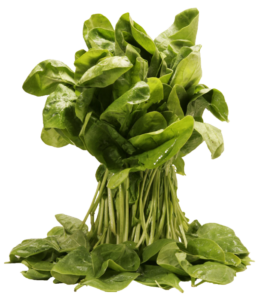 What is Vitamin K?
What is Vitamin K?
Vitamin K is an amazing helper to our bodies and has particular benefits related to blood. It makes proteins for our blood, bones, and kidneys. It can help keep blood vessels healthy. It helps stop cuts and scrapes from bleeding too much and starts the healing process. Vitamin K also partners with calcium to help build strong bones. In short, it’s a wonderful source of many vitamins and minerals that keep the body strong, healthy, and functioning well.
Vitamin K In Food
Many green foods are Champion Sources of Vitamin K. Champion sources provide at least 20% of the Recommended Daily Value of the vitamin.
Champion Sources of Vitamin K include:
Asparagus
Broccoli
Brussels sprouts
Celery
Cooked greens (e.g., spinach, collards, kale, mustard greens, Swiss chard)
Peas
Cooked soybeans
How Spinach Grows
Spinach is mainly grown in California and Texas during the winter months. Spinach tends to grow best in cool, damp weather, rich soil, and is planted as seeds. There are as many as 40,000 seeds in just one pound of spinach! In California, farmers can plant as many as 1.3 million seeds per acre.
Spinach is generally harvested in one of two ways.
Processed spinach is spinach that is intended to be used for processed foods. It is harvested up to twice as fast as whole leaf spinach and picked at a younger age when its leaves are small and vertical.
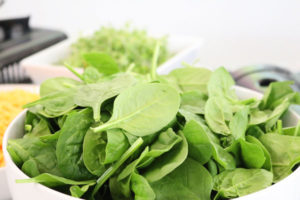 Spinach that is intended to be sold as whole-leaf for salads and other cooking methods usually grows for about twice the amount of time to let the plant mature. This is the spinach you see in produce sections and farmers’ markets.
Spinach that is intended to be sold as whole-leaf for salads and other cooking methods usually grows for about twice the amount of time to let the plant mature. This is the spinach you see in produce sections and farmers’ markets.
Three Main Spinach Varieties
There are three main varieties of spinach:
Savoy leaves are crinkly, dark green, and curly. They have a rough texture with a distinct taste and are sold as fresh.
Flat or Smooth has unwrinkled, spade-shaped leaves. It has a milder taste than savoy and is used for canned and frozen spinach, soups, and baby foods.
Semi-savoy has slightly curly leaves, is easier to clean than savoy, and is sold as fresh as well as being found in processed foods.
Spinach Facts
• California is the leading producer of fresh market and processed spinach in the United States.
• Processed spinach accounts for about 74% of all spinach grown in California. It is used for canning and freezing, as well as for baby food (puréed).
• Annual consumption of spinach (fresh, frozen, and canned) jumped 66% from 1992 to 2002. This is mostly due to the availability of pre-cut, bagged spinach.
• Spinach was the first frozen vegetable to be sold for commercial use.
 • When Popeye made his debut on January 17, 1929, spinach became the third most popular children’s food after turkey and ice cream. Today, more than 94% of Americans associate spinach with Popeye.
• When Popeye made his debut on January 17, 1929, spinach became the third most popular children’s food after turkey and ice cream. Today, more than 94% of Americans associate spinach with Popeye.
Learn more about spinach, and discover ways to enjoy it at home and at school. Download our Harvest of the Month resources for families here.
If your child’s teacher wants to sign up for the program, it’s easy. For more information about the program, classroom tasting parties, and more, click here for our promo flyer.
———————————
A reminder that all school meals for the 2021-22 school year are offered to students at no cost. That includes breakfast, lunch, and supper if your child’s school offers a supper option. We are grateful to the USDA for expanding our ability to offer these meals to our students at no cost and hope that you will make the most of this offer.
Not only can families save plenty of money on food, but with meals ready at school, you’ll have more time to spend together as a family than when you used to be making lunches! As always, we are committed to serving fresh, healthy, delicious meals, and working with as many local and California-based farms as possible.
*** With meals being offered at no charge, we are anticipating more students will be dining with us. This may affect the availability of some entrees as we learn and adapt to greater numbers and meet the demand.
———————————
Staff Spotlight: Sonja Harvey,
Mission Meadows Elementary
Our Staff Spotlight this month is Sonja Harvey from Mission Meadows Elementary. Sonja has taken the school by storm, becoming a favorite person on campus and keeping our students well-fed with plenty of smiling faces at mealtimes.
How long have you been at Mission Meadows?
Since 2014
Favorite Hobbies:
Anything crafty or DIY
Favorite TV/Binge Watching:
30 Rock and Space Force
Favorite Music (Bands/Singers):
I love all kinds of music. It switches daily lol.
Favorite WaveCrest Entree:
Orange Chicken
Favorite thing about working at WaveCrest Cafe?
The team atmosphere
———————————
We have staffing opportunities at most of our schools, and new positions come up regularly. Come be part of a fun, dynamic team and serve our students, staff, and families every day.
With all meals being offered at no charge, we are anticipating even more students will be dining with us, which may result in longer lines. Help us serve our students faster and better – come be part of our team!
Click here to learn more about our open positions and apply today.
———————————
MENU SPOTLIGHT: Strawberry Spinach Salad
One of our most popular entree salads returns as a daily entree in middle and high schools. Perfect for Spring, a bed of fresh spinach and other veggies are topped with sweet strawberries, and waiting for one of our homemade dressings.
So while elementary classrooms may get to try spinach in their Harvest of the Month activities, our middle and high schoolers have this entree-sized salad available every day.
Be sure to check your school’s menu to see your daily options, and enjoy our fresh, healthy, and delicious meals!
———————————
Resources & Grants | Recursos y subvenciones
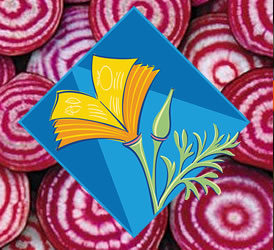 Request A Master Gardener For Your School
Request A Master Gardener For Your School
The San Diego County Master Gardener Association provides Master Gardeners to help schools set up and maintain gardens. Master Gardeners act as consultants, mentoring parents and teachers who request help with beginning or improving their school gardens. Request a garden consultant here.
 Educational Garden Design Grant – Rolling Dates
Educational Garden Design Grant – Rolling Dates
The California Native Garden Foundation offers grants for school gardens that feature CA native plants. Types of support include garden design services, in-kind donations of plants and landscape materials, volunteer assistance, and direct financial assistance. Click here to learn more and to apply.
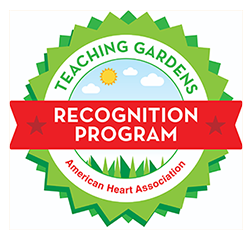 American Heart Association Teaching Gardens Grant – Rolling Dates
American Heart Association Teaching Gardens Grant – Rolling Dates
The American Heart Association is helping the fight against childhood obesity by planting gardens in elementary schools across the country that become real-life learning laboratories for students to experience what it means to be healthy. Click here to learn more.
 Grant From Children’s Obesity Fund – Rolling Dates
Grant From Children’s Obesity Fund – Rolling Dates
The Children’s Obesity Fund seeks to educate parents and children about America’s rising obesity rates and prevent the next generation from continuing down this unhealthy road. The fund strives to support nonprofit organizations that share the goal of eliminating childhood obesity. Find out more here.
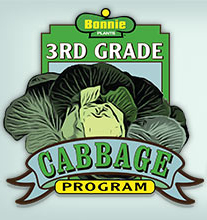 Bonnie’s Plants 3rd Grade Cabbage Program – Rolling Dates
Bonnie’s Plants 3rd Grade Cabbage Program – Rolling Dates
Bonnie’s provides free mega-cabbage plants to 3rd-grade teachers across the US who want to participate. Students grow the cabbages and submit pictures and measurements of their harvest to be considered for a $1,000 scholarship. Find out how to participate here.
 Captain Planet Foundation Grants – Rolling Dates
Captain Planet Foundation Grants – Rolling Dates
Captain Planet Foundation invests in high-quality, solution-based programs that embrace STEM learning and empower youth to become local & global environmental change-makers. Educators who are interested in receiving support for students to design and implement hands-on environmental solutions are eligible for project funding. Learn more here.
Follow us on social media:
(C) 2022 WaveCrest Cafe / Vista Unified School District
This institution is an equal opportunity provider.
Esta institución es un proveedor de igualdad de oportunidades.


